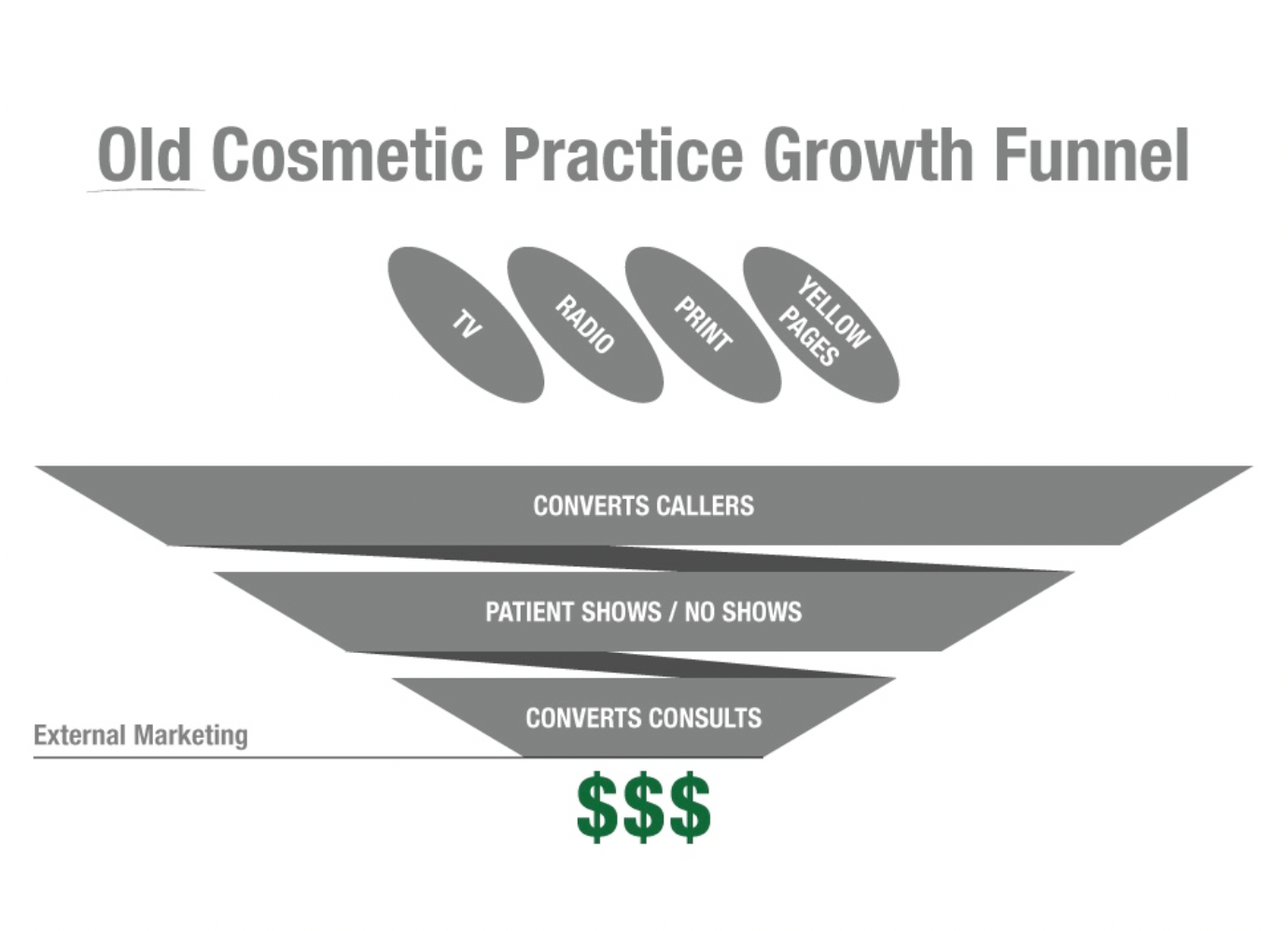- Acne
- Actinic Keratosis
- Aesthetics
- Alopecia
- Atopic Dermatitis
- Buy-and-Bill
- COVID-19
- Case-Based Roundtable
- Chronic Hand Eczema
- Chronic Spontaneous Urticaria
- Drug Watch
- Eczema
- General Dermatology
- Hidradenitis Suppurativa
- Melasma
- NP and PA
- Pediatric Dermatology
- Pigmentary Disorders
- Practice Management
- Precision Medicine and Biologics
- Prurigo Nodularis
- Psoriasis
- Psoriatic Arthritis
- Rare Disease
- Rosacea
- Skin Cancer
- Vitiligo
- Wound Care
Publication
Article
Aesthetic Authority
The Old vs. New Cosmetic Practice Growth Funnel
The cosmetic surgery industry is currently in the mature marketing phase, says practice consultant Catherine Maley, who compares the old growth funnel with the new and explains how to survive in today’s marketplace.
Saying that “times have changed” would be a massive understatement when referring to growing a cosmetic practice in today’s marketplace.
To make sense of it, it helps to understand the structure and stages of an industry so you can then adapt to it.
The Life Cycle of the Cosmetic Surgery Industry
Every industry goes through stages of introduction, growth, maturity, and decline.

Why? For lots of reasons, but the biggest one is because society and its consumers accept products and services at different rates. As society begins to adopt and accept an innovation, the demand for new services grows and eventually reaches maturity.
But a lot happens between these stages.
The Introduction Stage
Just one generation ago growing a cosmetic practice was straight forward. At that time, cosmetic surgery was still a taboo topic and only for celebrities and consumers of high-worth value. Because demand for cosmetic surgery was limited, so were the number of service providers, most of whom were plastic surgeons who did a lot of reconstructive surgery and wanted to spread their wings to the cash side of medicine.
Advertising was minimal and consisted of a few surgeons investing in mass advertising via TV, radio, and print ads that centered on the surgeon’s status.
Prospective patients looked up to surgeons and, most often, went with the surgeons’ recommendations since they were regarded as the experts.
When prospective patients called the office, it was to book a consultation with the surgeon. More often than not, patients showed up for their appointments and conversions were fairly straight forward.
This old cosmetic practice growth funnel worked well. There were few plastic surgeons to choose from and they enjoyed regal status.

Growth Stage
As society accepted cosmetic surgery more (thanks to the media who report on it and the Kardashians who partake in it… a lot), consumer demand increased dramatically.
The growth in demand for cosmetic surgery, coupled with exciting technological advancements, not only opened up the industry to an increase in consumers, but also to an increase of service providers.
No longer was cash-based cosmetic medicine limited to board-certified plastic surgeons. Any MD could open a medspa and provide convenience and service for cash-based, non-surgical procedures that filled the need for consumers not ready for surgery.
Then, as government regulations deterred medical providers from practicing insurance-based medicine due to low reimbursement and high cost and hassle of reimbursement, that supply of cash-based service providers increased even more.
Once there was a proven consumer demand for cosmetic surgery, big business and pharma also jumped in and created more solutions for service providers to offer to consumers.
And, all of that increased the competition dramatically.
Today, consumer demand continues to increase even more and includes new types of consumers (men and the younger population), as well as geographic opportunities, so the future looks promising.
But all of this leads to commoditization within the aesthetic industry.
As the competition enters the market, they frequently offer aesthetic services at lower prices. They almost have to since they don’t enjoy status and need to enter the marketplace to attract new cosmetic patients somehow.

This creates a downward sloping demand curve that reflects the willingness of consumers to purchase more of the commodity at lower price levels.
Now, consumers have a plethora of solutions at a range of prices to choose from. This scenario forces cosmetic surgeons to either lower their prices to compete or add more value to justify the higher prices.
Adding value includes creating an image and brand to position the practice in a crowded marketplace as a high-end service provider offering better quality of results, excellent customer service, an upscale experience, and so on.
Maturity Stage
With so many service providers and many more manufacturers offering countless solutions to address consumers’ cosmetic concerns, the competition for new cosmetic patients becomes fierce. Increased competition causes profits to peak at the end of the growth stage and beginning of the maturity stage, so total sales continue to grow during the first part of the maturity stage.
Profits then decline during the remainder of the maturity stage because even though many consumers are buying, they are buying on price more often than value.
Here is the point: In the growth stage, even inefficient practices make money. However, only the best run practices survive in the maturity stage.
Less efficient practices struggle to generate positive cash flow in an uber-competitive environment because they are not able to spend enough to attract the number of patients needed to generate positive cash flow, so they get weeded out.
Today’s cosmetic practice growth funnel is more complex. Cosmetic practices have to be able to balance their advertising costs and overhead expenses to keep a steady stream of patients coming to them without going broke.

Newsletter
Like what you’re reading? Subscribe to Dermatology Times for weekly updates on therapies, innovations, and real-world practice tips.





























